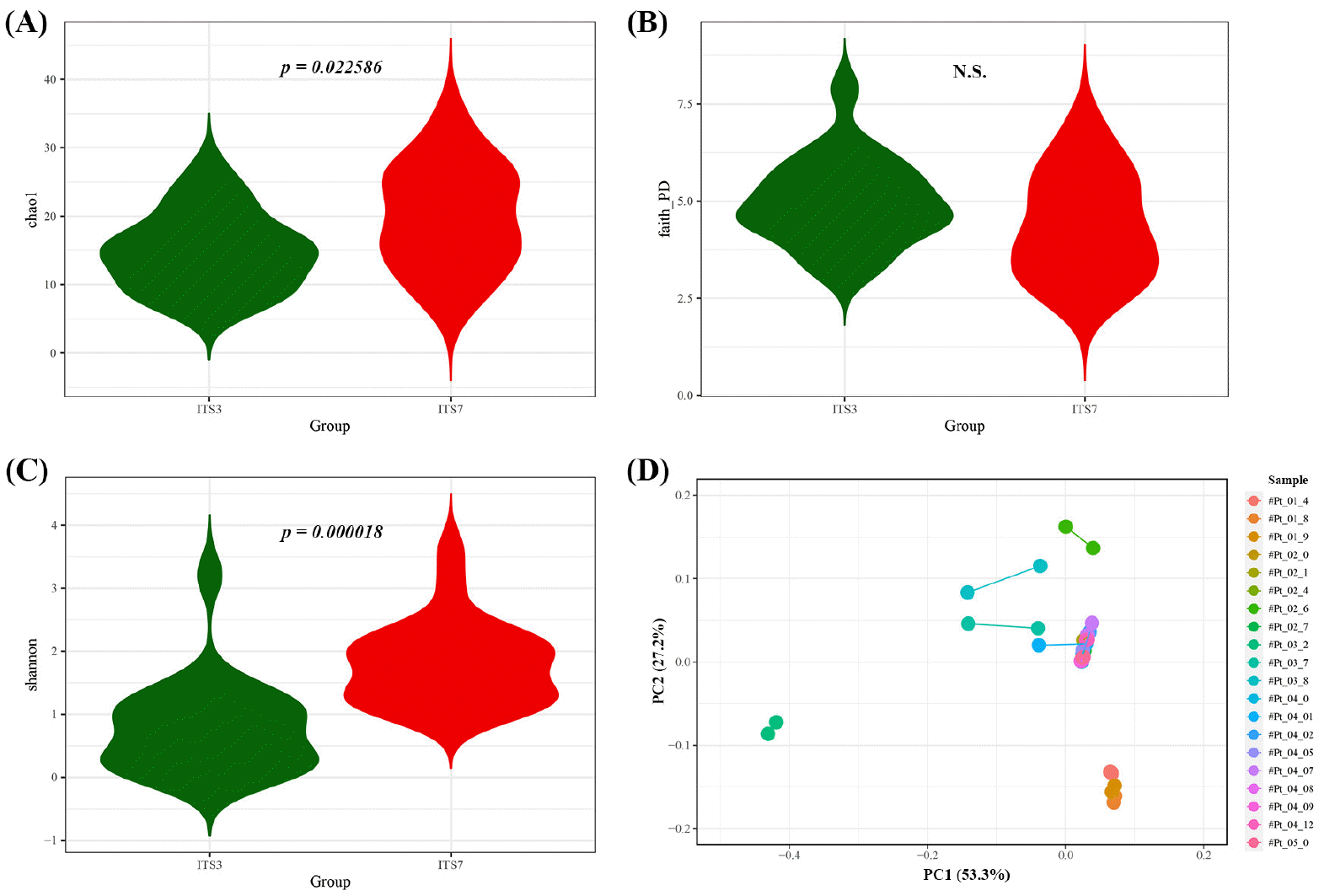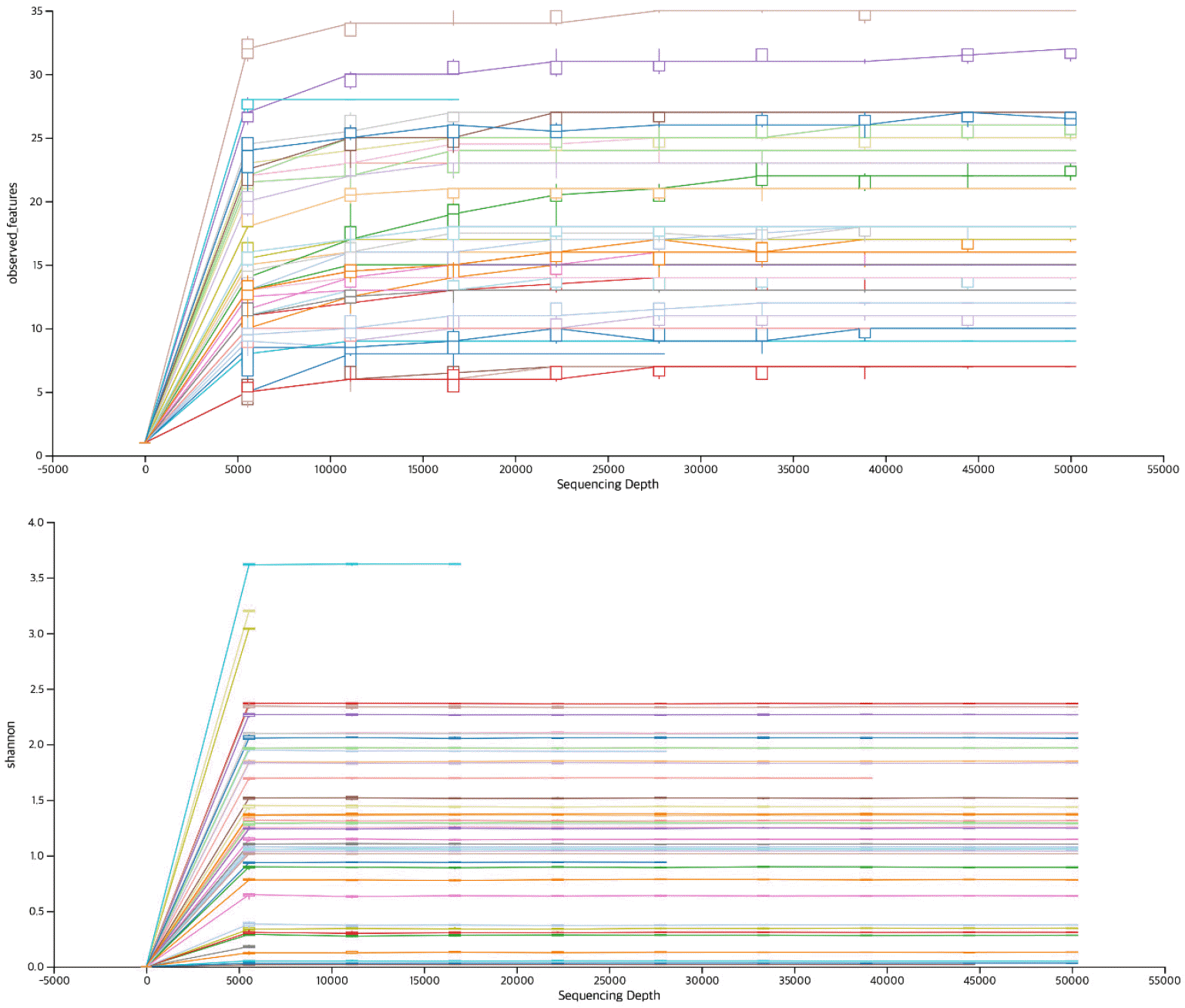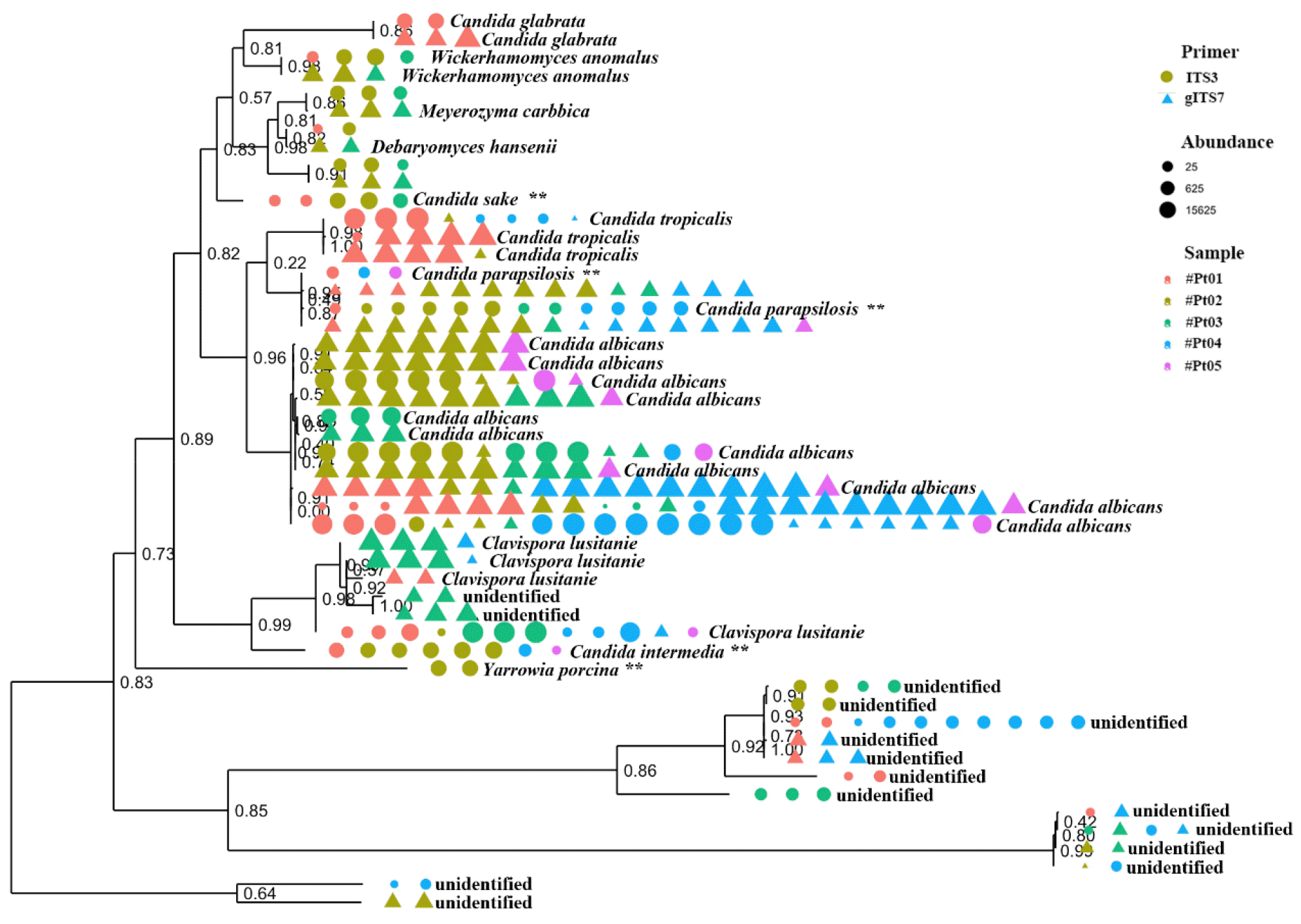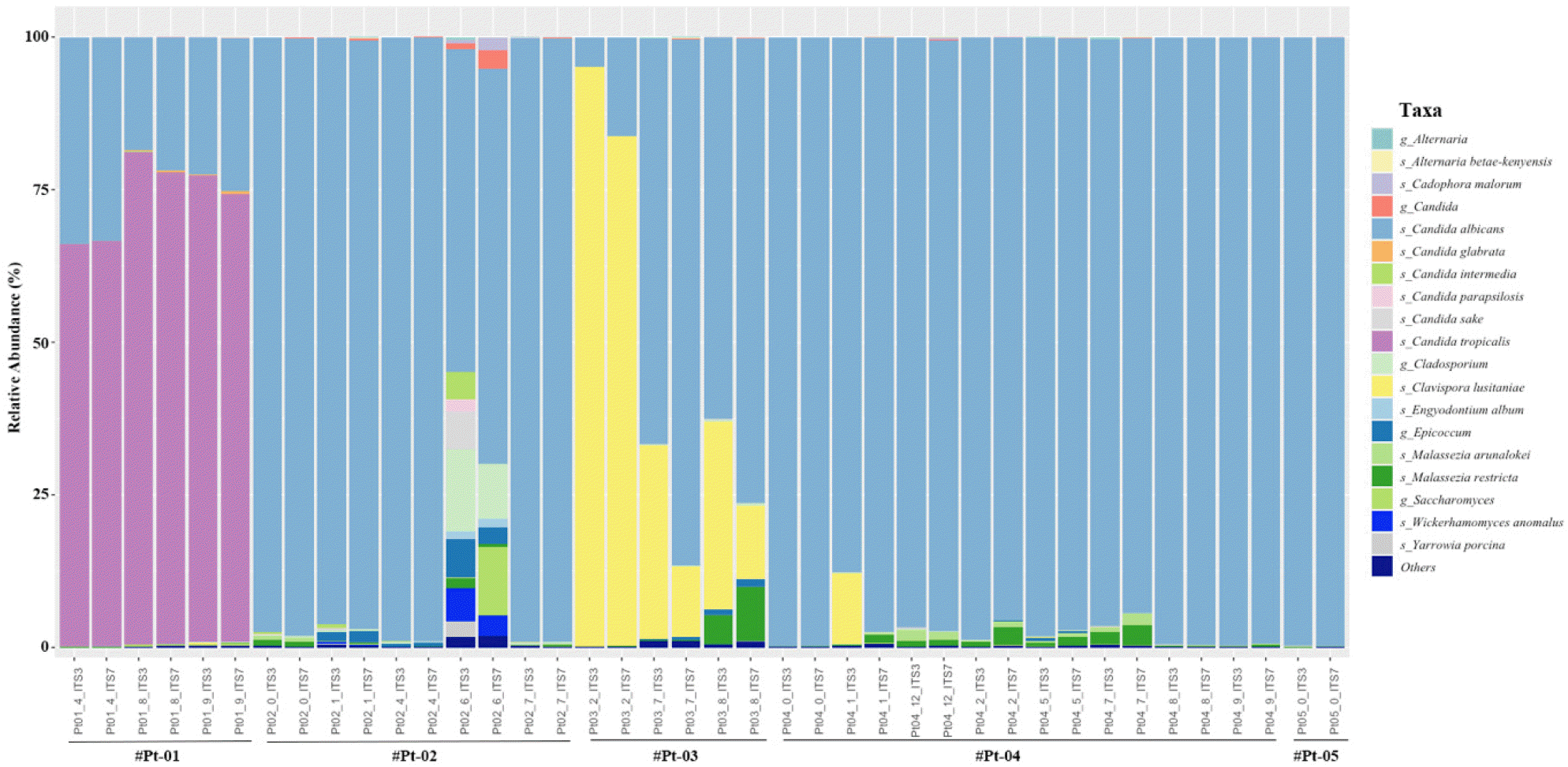1. Tiew PY, Mac Aogain M, Ali NABM, Thng KX, Goh K, Lau KJX, et al. The Mycobiome in Health and Disease: Emerging Concepts, Methodologies and Challenges.
Mycopathologia 2020;185:207-31.DOI:
10.1007/s11046-019-00413-z. PMID:
31894501. PMCID:
PMC7223441.
2. Diaz PI, Dongari-Bagtzoglou A. Critically Appraising the Significance of the Oral Mycobiome.
J Dent Res 2021;100:133-140.DOI:
10.1177/0022034520956975. PMID:
32924741.
3. Labeau SO, Van de Vyver K, Brusselaers N, Vogelaers D, Blot SI. Prevention of ventilator-associated pneumonia with oral antiseptics: a systematic review and meta-analysis.
Lancet Infect Dis 2011;11:845-54.DOI:
10.1016/S1473-3099(11)70127-X.
4. Alhazzani W, Smith O, Muscedere J, Medd J, Cook D. Toothbrushing for critically ill mechanically ventilated patients: a systematic review and meta-analysis of randomized trials evaluating ventilator-associated pneumonia.
Crit Care Med 2013;41:646-55.DOI:
10.1097/CCM.0b013e3182742d45. PMID:
23263588.
5. Krause R, Halwachs B, Thallinger GG, Klymiuk I, Gorkiewicz G, Hoenigl M, et al. Characterisation of Candida within the Mycobiome/Microbiome of the Lower Respiratory Tract of ICU Patients.
PloS one 2016;11:e0155033.DOI:
10.1371/journal.pone.0155033. PMID:
27206014. PMCID:
PMC4874575.
6. Strollo S, Lionakis MS, Adjemian J, Steiner CA, Prevots DR. Epidemiology of Hospitalizations Associated with Invasive Candidiasis, United States, 2002-2012.
Emerg Infect Dis. 2016;23:7-13.DOI:
10.3201/eid2301.161198. PMID:
27983497. PMCID:
PMC5176241.
7. Mencarini J, Mantengoli E, Tofani L, Riccobono E, Fornaini R, Bartalesi F, et al. Evaluation of candidemia and antifungal consumption in a large tertiary care Italian hospital over a 12-year period.
Infection 2018;46:469-76.DOI:
10.1007/s15010-018-1139-z. PMID:
29654496.
8. Baraniya D, Chen T, Nahar A, Alakwaa F, Hill J, Tellez M, et al. Supragingival mycobiome and inter-kingdom interactions in dental caries.
J Oral Microbiol 2020;12:1729305.DOI:
10.1080/20002297.2020.1729305. PMID:
32158514. PMCID:
PMC7048226.
9. Ghannoum MA, Jurevic RJ, Mukherjee PK, Cui F, Sikaroodi M, Naqvi A, et al. Characterization of the oral fungal microbiome (mycobiome) in healthy individuals.
PLoS Pathog 2010;6:e1000713.DOI:
10.1371/journal.ppat.1000713. PMID:
20072605. PMCID:
PMC2795202.
10. Dupuy AK, David MS, Li L, Heider TN, Peterson JD, Montano EA, et al. Redefining the human oral mycobiome with improved practices in amplicon-based taxonomy: discovery of Malassezia as a prominent commensal.
PLoS One 2014;9:e90899.DOI:
10.1371/journal.pone.0090899. PMID:
24614173. PMCID:
PMC3948697.
11. Findley K, Oh J, Yang J, Conlan S, Deming C, Meyer JA, et al. Topographic diversity of fungal and bacterial communities in human skin.
Nature 2013;498:367-70.DOI:
10.1038/nature12171. PMID:
23698366. PMCID:
PMC3711185.
12. Imabayashi Y, Moriyama M, Takeshita T, Ieda S, Hayashida JN, Tanaka A, et al. Molecular analysis of fungal populations in patients with oral candidiasis using next-generation sequencing.
Sci Rep 2016;6:28110.DOI:
10.1038/srep28110. PMID:
27305838. PMCID:
PMC4910111.
13. Cui L, Lucht L, Tipton L, Rogers MB, Fitch A, Kessinger C, et al. Topographic diversity of the respiratory tract mycobiome and alteration in HIV and lung disease.
Am J Respir Crit Care Med 2015;191:932-42.DOI:
10.1164/rccm.201409-1583OC. PMID:
25603113. PMCID:
PMC4435454.
14. Turenne CY, Sanche SE, Hoban DJ, Karlowsky JA, Kabani AM. Rapid identification of fungi by using the ITS2 genetic region and an automated fluorescent capillary electrophoresis system.
J Clin Microbiol 1999;37:1846-51.DOI:
10.1128/JCM.37.6.1846-1851.1999. PMID:
10325335. PMCID:
PMC84966.
15. Fujita SI, Senda Y, Nakaguchi S, Hashimoto T. Multiplex PCR using internal transcribed spacer 1 and 2 regions for rapid detection and identification of yeast strains.
J Clin Microbiol 2001;39:3617-22.DOI:
10.1128/JCM.39.10.3617-3622.2001. PMID:
11574582. PMCID:
PMC88398.
16. Ihrmark K, Bödeker IT, Cruz-Martinez K, Friberg H, Kubartova A, Schenck J, et al. New primers to amplify the fungal ITS2 region--evaluation by 454-sequencing of artificial and natural communities.
FEMS Microbiol Ecol 2012;82:666-77.DOI:
10.1111/j.1574-6941.2012.01437.x. PMID:
22738186.
17. Shelburne SA, Ajami NJ, Chibucos MC, Beird HC, Tarrand J, Galloway-Peña J, et al. Implementation of a Pan-Genomic Approach to Investigate Holobiont-Infecting Microbe Interaction: A Case Report of a Leukemic Patient with Invasive Mucormycosis.
PLoS One 2015;10:e0139851.DOI:
10.1371/journal.pone.0139851. PMID:
26556047. PMCID:
PMC4640583.
18. Harmonization ICf. The international council fo harmonization of technical requirements for phamaceuticals for human use (ver.3) 2017. Available from: http://www.ich.org/fileadmin/Public_Web_Site/ABOUT_ICH/Available from: Articles_Procedures/ICH_EWG_IWG_SOP_v3.0_final_22Jun2017-.pdf.
19. Bonham PA. Swab cultures for diagnosing wound infections: a literature review and clinical guideline.
J Wound Ostomy Continence Nurs 2009;36:389-95.DOI:
10.1097/WON.0b013e3181aaef7f. PMID:
19609159.
21. Nilsson RH, Larsson KH, Taylor AFS, Bengtsson-Palme J, Jeppesen TS, Schigel D, et al. The UNITE database for molecular identification of fungi: handling dark taxa and parallel taxonomic classifications. Nucleic Acids Res 2019;47:D259-64.DOI:
10.1093/nar/gky1022. PMID:
30371820. PMCID:
PMC6324048.
23. Batista GC, Krebs VL, Ruiz LS, Auler ME, Hahn RC, Paula CR. Oral colonization: a possible source for candidemia in low-weight neonates.
J Mycol Med 2014;24:81-6.DOI:
10.1016/j.mycmed.2013.11.004. PMID:
24440610.
24. Sardi JCO, Scorzoni L, Bernardi T, Fusco-Almeida AM, Mendes Giannini MJS. Candida species: current epidemiology, pathogenicity, biofilm formation, natural antifungal products and new therapeutic options.
J Med Microbiol 2013;62:10-24.DOI:
10.1099/jmm.0.045054-0. PMID:
23180477.
25. Deorukhkar SC, Saini S, Mathew S. Non-albicans Candida Infection: An Emerging Threat.
Interdiscip Perspect Infect Dis 2014;2014:615958.DOI:
10.1155/2014/615958. PMID:
25404942. PMCID:
PMC4227454.
26. Atkinson BJ, Lewis RE, Kontoyiannis DP. Candida lusitaniae fungemia in cancer patients: risk factors for amphotericin B failure and outcome.
Med Mycol 2008;46:541-6.DOI:
10.1080/13693780801968571. PMID:
19180749.
27. Asner SA, Giulieri S, Diezi M, Marchetti O, Sanglard D. Acquired Multidrug Antifungal Resistance in Candida lusitaniae during Therapy.
Antimicrob Agents Chemother 2015;59:7715-22.DOI:
10.1128/AAC.02204-15. PMID:
26438490. PMCID:
PMC4649199.





 PDF
PDF Citation
Citation Print
Print





 XML Download
XML Download